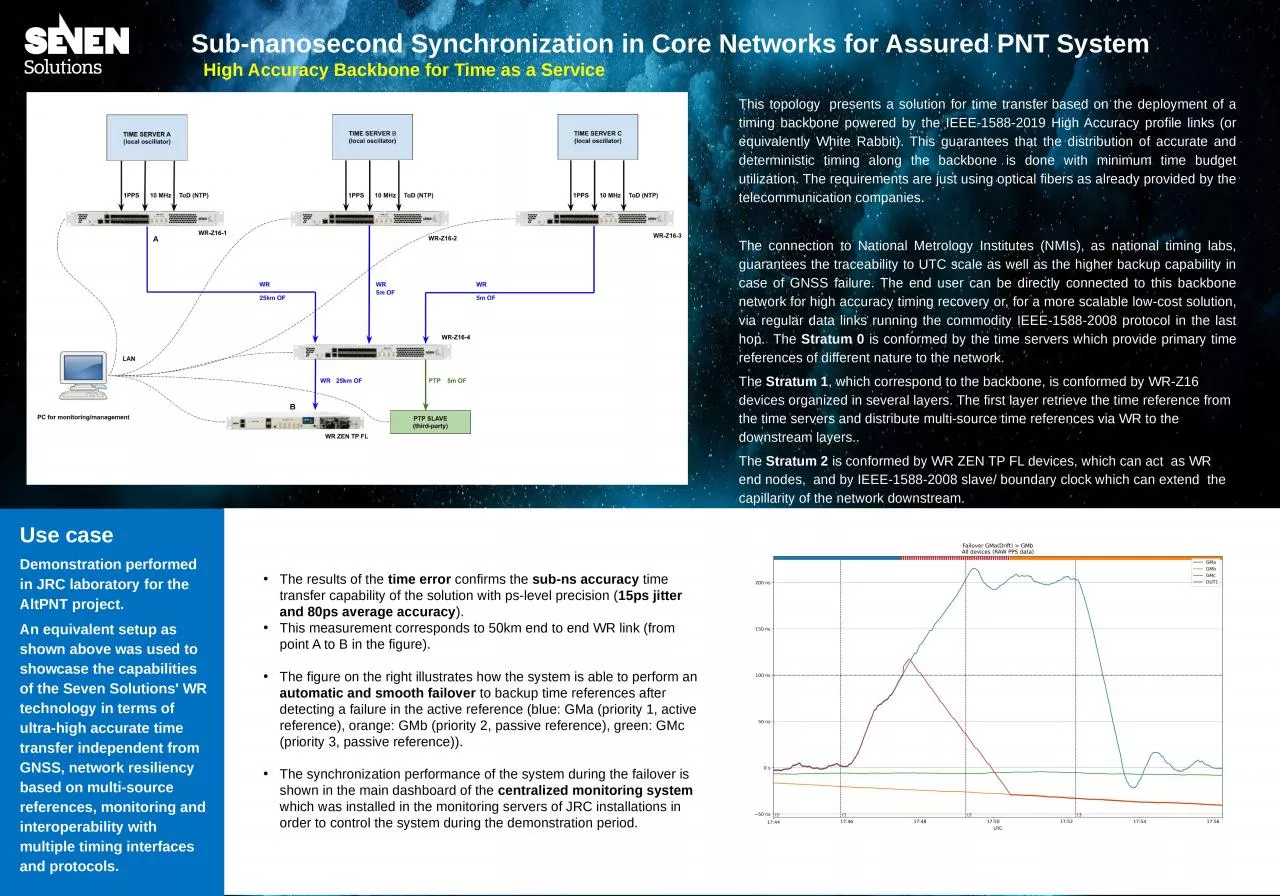

High Accuracy Backbone for Time as a Service Use case Demonstration performed in JRC laboratory for the AltPNT project An equivalent setup as shown above was used to showcase the capabilities of the Seven Solutions WR technology in terms of ultrahigh accurate time transfer independent f ID: 1007018
Download Presentation The PPT/PDF document "Sub-nanosecond Synchronization in Core N..." is the property of its rightful owner. Permission is granted to download and print the materials on this web site for personal, non-commercial use only, and to display it on your personal computer provided you do not modify the materials and that you retain all copyright notices contained in the materials. By downloading content from our website, you accept the terms of this agreement.
1. Sub-nanosecond Synchronization in Core Networks for Assured PNT System High Accuracy Backbone for Time as a Service Use caseDemonstration performed in JRC laboratory for the AltPNT project.An equivalent setup as shown above was used to showcase the capabilities of the Seven Solutions' WR technology in terms of ultra-high accurate time transfer independent from GNSS, network resiliency based on multi-source references, monitoring and interoperability with multiple timing interfaces and protocols. The results of the time error confirms the sub-ns accuracy time transfer capability of the solution with ps-level precision (15ps jitter and 80ps average accuracy). This measurement corresponds to 50km end to end WR link (from point A to B in the figure).The figure on the right illustrates how the system is able to perform an automatic and smooth failover to backup time references after detecting a failure in the active reference (blue: GMa (priority 1, active reference), orange: GMb (priority 2, passive reference), green: GMc (priority 3, passive reference)).The synchronization performance of the system during the failover is shown in the main dashboard of the centralized monitoring system which was installed in the monitoring servers of JRC installations in order to control the system during the demonstration period.This topology presents a solution for time transfer based on the deployment of a timing backbone powered by the IEEE-1588-2019 High Accuracy profile links (or equivalently White Rabbit). This guarantees that the distribution of accurate and deterministic timing along the backbone is done with minimum time budget utilization. The requirements are just using optical fibers as already provided by the telecommunication companies. The connection to National Metrology Institutes (NMIs), as national timing labs, guarantees the traceability to UTC scale as well as the higher backup capability in case of GNSS failure. The end user can be directly connected to this backbone network for high accuracy timing recovery or, for a more scalable low-cost solution, via regular data links running the commodity IEEE-1588-2008 protocol in the last hop. The Stratum 0 is conformed by the time servers which provide primary time references of different nature to the network.The Stratum 1, which correspond to the backbone, is conformed by WR-Z16 devices organized in several layers. The first layer retrieve the time reference from the time servers and distribute multi-source time references via WR to the downstream layers..The Stratum 2 is conformed by WR ZEN TP FL devices, which can act as WR end nodes, and by IEEE-1588-2008 slave/ boundary clock which can extend the capillarity of the network downstream.AB